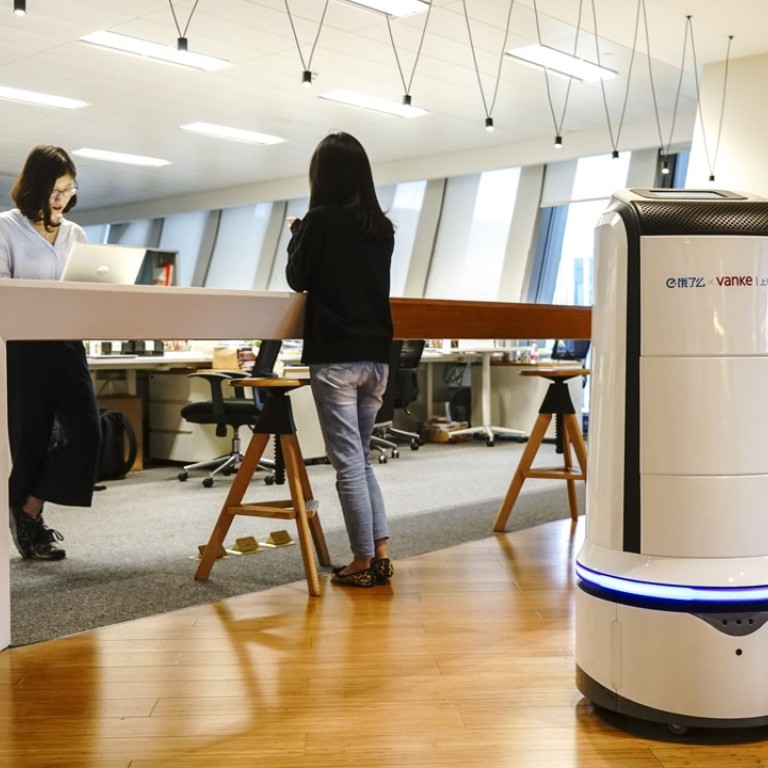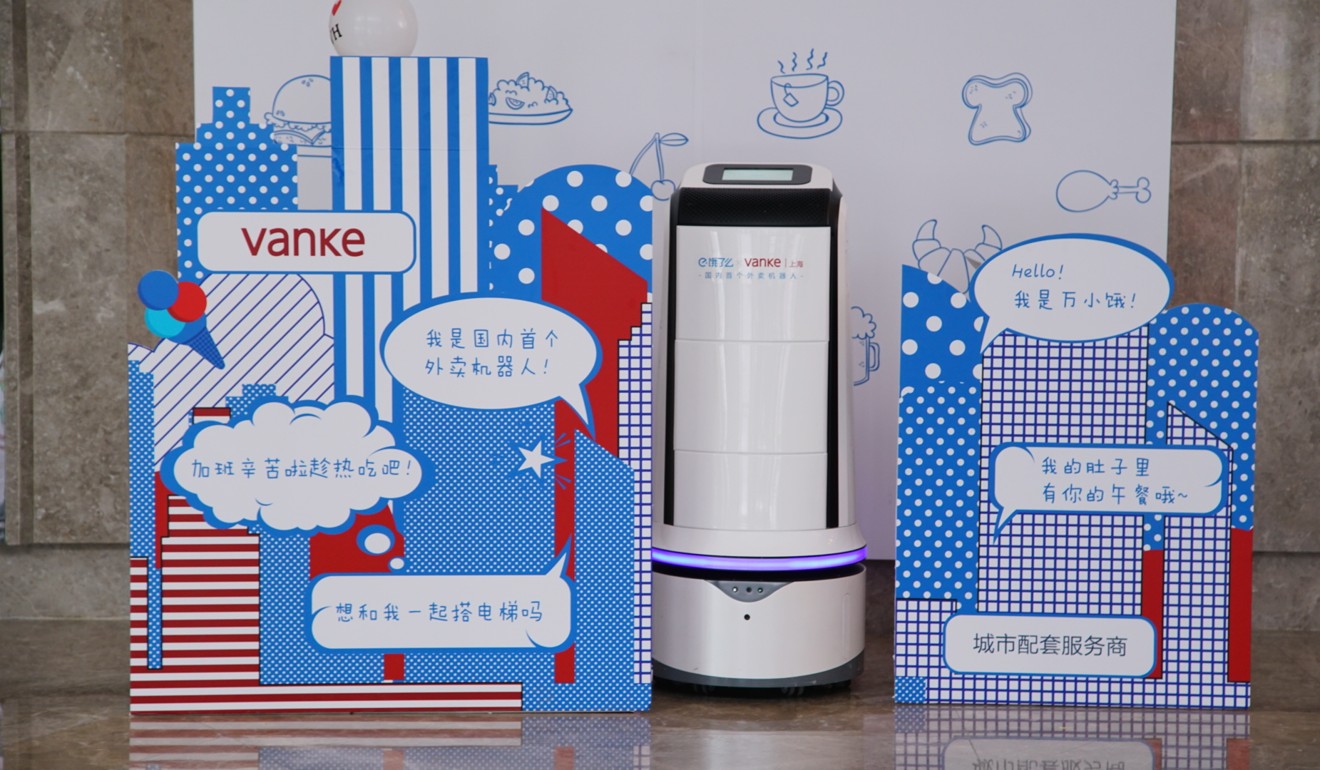
Are you hungry? Robots will be at hand to deliver Ele.me’s lunch boxes to your desk
Ele.me is rolling out a food delivery robot in Shanghai to resolve the so-called last mile problem of delivering lunch boxes to customers’ desks.
Chinese food delivery platform Ele.me has unveiled a robotic solution for the delivery bottlenecks at office buildings, a development likely to be welcomed by food delivery workers plying the business districts of major cities.
In a concept unveiled as the Hongqiao Vanke Centre, an office in Shanghai, Ele.me rolled out a food-delivery robot designed to resolve the “last mile” problem.
Under the system, the food-delivery robot acts as an intermediary, taking the packages throughout the office building, notifying customers along the way.
Ele.me, whose name means “are you hungry?” in Chinese, said the robot is backed by its own proprietary software system. In the future, the trial could expanded to more Shanghai Vanke buildings. Each robot can transport three meals with a maximum operation time of eight hours between charging.
Ele.me said the initiative is part of its “future logistics” plan that aims to replace its human courier network with automation technologies within three to five years. Ele.me’s
Ele.me’s flying E7 delivery drone, which debuted in September, can carry up to 6 kilos of food up to 20 kilometres. The company’s investors include Alibaba Group Holding -- owner of the South China Morning Post -- and its affiliate Ant Financial.

While flying drone delivery systems are still under development, the “final mile” office delivery robot may be rolled out more rapidly as a way to relieve inefficiencies, especially during the busy lunch period.
A video that went viral online last year captured the despair of a delivery man who burst into tears when he was delayed by the rush-hour queue for the lift in a major office building. In China’s cutthroat food courier industry, it is not uncommon for delivery workers to face financial penalties if they turn up late.
Joe Zhou, head of research with JLL China, a real estate service firm that manages A-grade office building, said automation technologies have already been used in many premium offices in China, especially at reception desks.
Most premium offices require food couriers to wait at the ground floor entrance, requiring office workers or internal staff to manually pick up the orders.
“Lunchtime delivery traffic can be so huge that robotics might be not enough to cope with it. For now people could do it better,” said Zhou.
He said drone and automation technologies have a brighter future in the wholesale warehousing sector.

